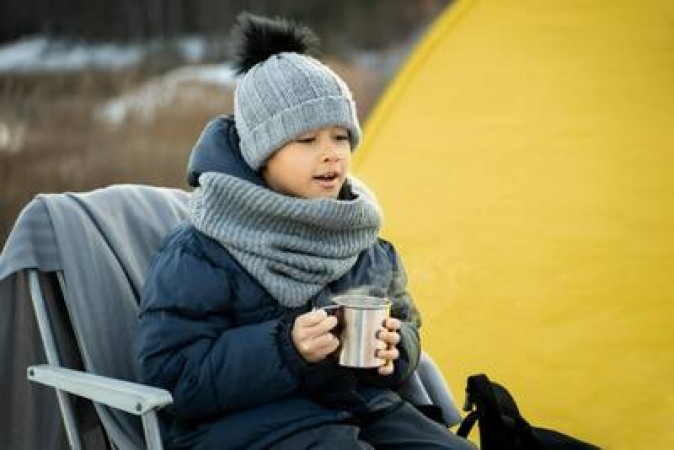
With the changing seasons, it's crucial to ensure your child stays healthy and comfortable amidst fluctuating temperatures. As the weather shifts between cold and heat, it's common for children to be susceptible to illnesses and discomfort. Here are some essential health tips to safeguard your child's well-being during these transitions.
Weather fluctuations can have a significant impact on children's health, particularly their immune system and overall comfort. Younger children, in particular, may struggle to regulate their body temperature effectively, making them more vulnerable to colds, flu, and other illnesses.
Increased Risk of Respiratory Infections: Cold weather can exacerbate respiratory conditions like asthma and increase the likelihood of colds and flu. The cold air can irritate the airways, leading to inflammation and making it easier for viruses to cause infections. Additionally, spending more time indoors in close proximity to others can facilitate the spread of respiratory illnesses.
Dry Skin: Exposure to cold air can lead to dry and irritated skin, causing discomfort and potential skin issues. Cold air lacks humidity, which can strip the skin of its natural oils, leading to dryness, itching, and even conditions like eczema. Proper hydration and moisturizing can help mitigate these effects.
Hypothermia: Prolonged exposure to cold temperatures without adequate protection can result in hypothermia, a dangerous condition where the body loses heat faster than it can produce it. Children are particularly susceptible to hypothermia because they have a higher surface area to body mass ratio, making it harder for them to retain heat. Symptoms include shivering, confusion, and lethargy, and it can be life-threatening if not treated promptly.
Dehydration: Hot weather can cause excessive sweating, leading to dehydration if adequate fluids aren't consumed. Children are more prone to dehydration than adults because their bodies have a higher water content and they produce more heat during physical activity. Signs of dehydration include thirst, dry mouth, fatigue, and dark urine. It's essential to encourage your child to drink water regularly, especially when playing outdoors or participating in sports.
Heat Exhaustion and Heatstroke: Overexposure to high temperatures can result in heat-related illnesses, ranging from heat exhaustion to life-threatening heatstroke. Heat exhaustion occurs when the body overheats and cannot cool down efficiently, leading to symptoms such as heavy sweating, dizziness, nausea, and headaches. If not addressed, heat exhaustion can progress to heatstroke, which requires immediate medical attention. Heatstroke is characterized by a high body temperature (above 104°F or 40°C), confusion, rapid pulse, and loss of consciousness.
Skin Problems: Sunburn and heat rash are common concerns during hot weather, especially if proper sun protection measures aren't taken. Sunburn occurs when the skin is exposed to UV radiation from the sun for an extended period, leading to redness, pain, and peeling. Heat rash, also known as prickly heat, occurs when sweat gets trapped in the sweat ducts, leading to redness, itching, and small bumps on the skin. Wearing loose, breathable clothing and applying sunscreen can help prevent these issues.
To ensure your child remains healthy and comfortable despite weather changes, follow these essential tips:
Layer Clothing: Dress your child in layers during colder weather, allowing them to adjust their attire based on temperature changes. Start with a moisture-wicking base layer to keep sweat away from the skin, followed by insulating layers for warmth, and finish with a waterproof and windproof outer layer to protect against rain and wind chill.
Wear Sun-Protective Clothing: In hot weather, opt for lightweight, breathable fabrics that provide UV protection to prevent sunburn. Choose clothing with a tight weave or UPF (Ultraviolet Protection Factor) rating for added sun protection. Hats with wide brims or neck flaps can also help shield your child's face and neck from the sun.
Regulate Indoor Temperature: Keep your home at a comfortable temperature, using heaters or air conditioners as needed to prevent extreme cold or heat indoors. During colder months, set the thermostat to a moderate temperature (around 68°F to 72°F or 20°C to 22°C) and use extra blankets or sleeping bags to keep your child warm at night. In hot weather, use fans or air conditioning to cool indoor spaces and create a comfortable sleeping environment.
Use Humidifiers: Combat dry indoor air during colder months by using humidifiers to maintain optimal humidity levels, preventing dry skin and respiratory discomfort. Humidifiers add moisture to the air, which can help soothe dry nasal passages and reduce the risk of respiratory infections. Be sure to clean humidifiers regularly to prevent the growth of mold and bacteria.
Apply Sunscreen: Use sunscreen with a high SPF to protect your child's skin from harmful UV rays, and reapply regularly, especially after swimming or sweating. Choose a broad-spectrum sunscreen that protects against both UVA and UVB rays and has an SPF of 30 or higher. Apply sunscreen generously to all exposed skin, including the face, ears, neck, and hands, and don't forget to cover areas like the tops of the feet and back of the neck.
Seek Shade: Limit exposure to direct sunlight during peak hours, typically between 10 a.m. and 4 p.m., and encourage shaded outdoor activities. Seek out shaded areas like trees, umbrellas, or canopies when spending time outdoors, and use sun-protective clothing, hats, and sunglasses for added protection. Remember that UV rays can still penetrate clouds and reflect off surfaces like water, sand, and snow, so it's essential to practice sun safety year-round.
By following these health tips, you can help protect your child from the adverse effects of weather changes and ensure their well-being throughout the year. Remember to stay vigilant and proactive in addressing any signs of discomfort or illness, prioritizing your child's health and happiness.
Know how the day is going to be for Gemini people, know your horoscope here
People of this zodiac sign will be successful in business plans today, know what your horoscope says